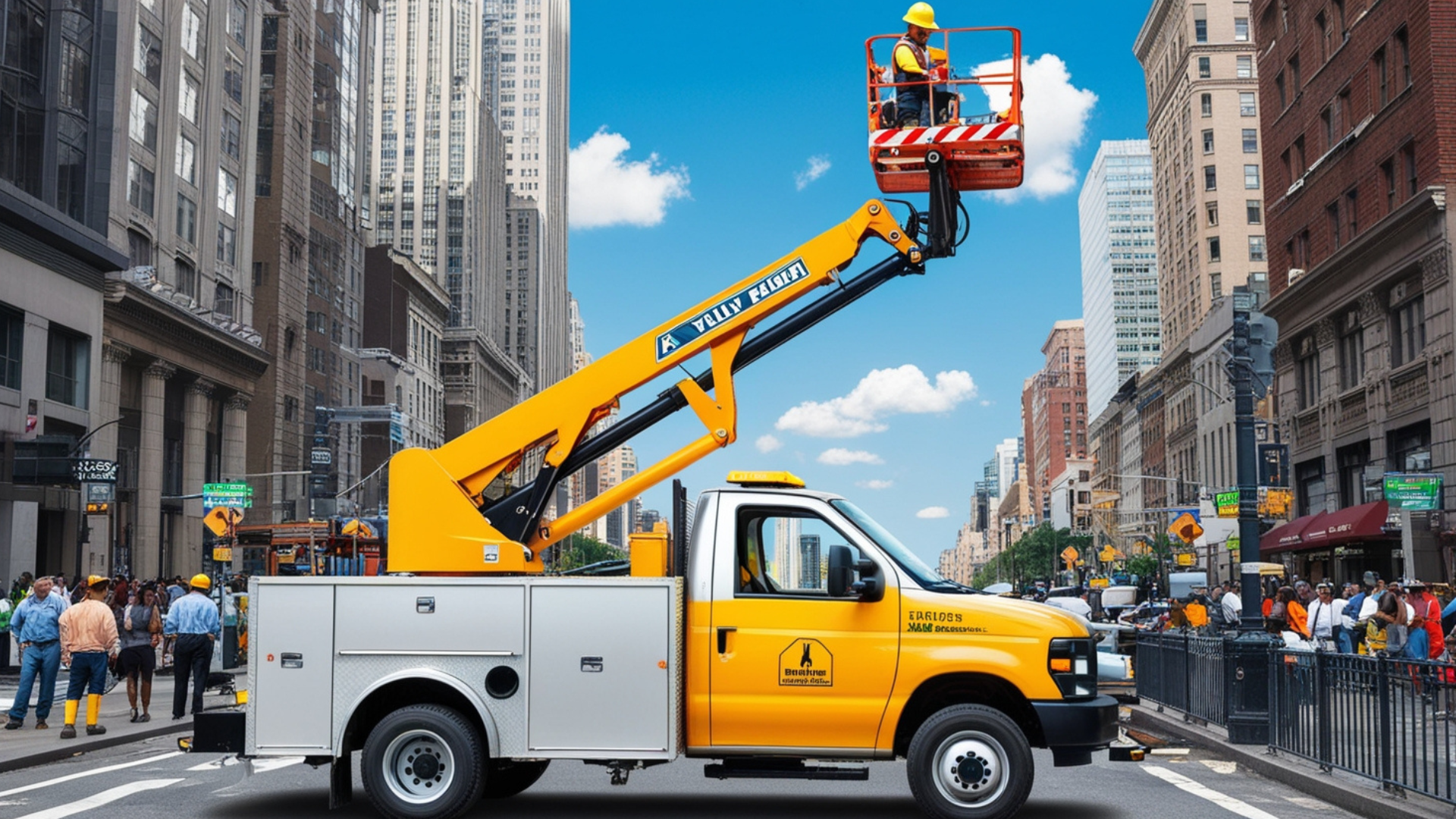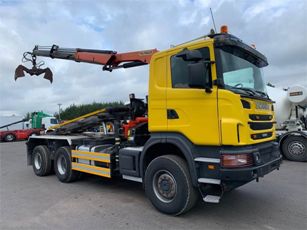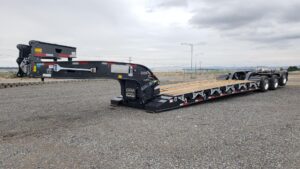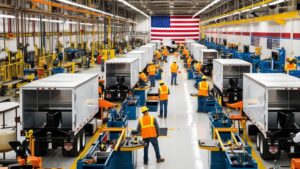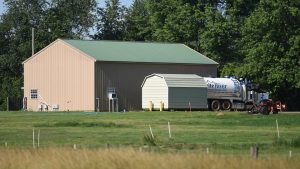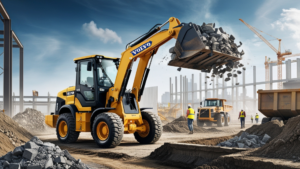Introduction
A bucket van, also known as a bucket truck or aerial lift truck, is a specialized vehicle designed for lifting personnel and equipment to elevated work sites. These versatile vehicles are essential in various industries, including telecommunications, electrical services, construction, and tree care. Bucket vans allow workers to perform tasks at height safely and efficiently, making them invaluable for maintenance, installation, and repair jobs. This article will explore the specifications, features, applications, benefits, and safety considerations associated with bucket vans.
Overview of Bucket Vans
Bucket vans are typically built on a commercial truck chassis and equipped with an extendable aerial lift that features a bucket or platform for workers. The aerial lift can elevate to significant heights, depending on the model, and is powered by the vehicle’s engine or an auxiliary power source. These trucks come in various sizes and configurations to meet the specific needs of different industries and applications.
Key Specifications
Understanding the specifications of bucket vans is crucial for selecting the right model for a particular job. Here are some of the common specifications you can expect to find in a typical bucket van:
- Chassis Type: Most bucket vans are built on medium-duty or heavy-duty truck chassis from manufacturers like Ford, Chevrolet, GMC, or International.
- Aerial Lift Height: Ranges from 30 to 60 feet (9 to 18 meters) for most models, with some specialized units reaching up to 100 feet (30 meters) or more.
- Bucket Capacity: Standard bucket capacity is typically around 300 to 500 lbs (136 to 227 kg), depending on the design and model.
- Platform Size: Buckets generally have dimensions ranging from 2 to 3 feet (0.6 to 0.9 meters) in width and 2 to 4 feet (0.6 to 1.2 meters) in length, providing enough space for one or two workers and their tools.
- Power Source: Aerial lifts can be powered by the vehicle’s engine or an independent hydraulic system, offering flexibility in power usage.
- Stabilization System: Many bucket vans come with stabilizers or outriggers that extend from the vehicle to enhance stability when the lift is in use.
- Weight Rating: Gross Vehicle Weight Rating (GVWR) for bucket vans typically ranges from 10,000 to 26,000 lbs (4,536 to 11,793 kg), depending on the chassis and lift system.
Key Features of Bucket Vans
1. Aerial Lift System
The most critical component of a bucket van is its aerial lift system. This system consists of a hydraulic boom that extends and elevates the bucket. The lift can be articulated, telescopic, or straight, providing different degrees of reach and maneuverability. Articulated booms allow for greater flexibility when accessing hard-to-reach areas, while telescopic booms provide maximum vertical height.
2. Safety Features
Safety is paramount when working at height, and bucket vans are equipped with several safety features to protect workers:
- Safety Harnesses: Buckets are often equipped with attachment points for safety harnesses, ensuring workers are secured while performing tasks.
- Guardrails: Many buckets include guardrails to provide additional safety for personnel.
- Emergency Descent Systems: These systems allow workers to descend safely in the event of a hydraulic failure or other emergencies.
3. Operator Controls
Bucket vans come with operator controls located both in the bucket and at the base of the vehicle. The controls are designed for ease of use, allowing the operator to maneuver the lift and bucket efficiently. Some advanced models feature remote controls that enable operators to manage the lift from a distance.
4. Versatility
Bucket vans are highly versatile and can be equipped with various attachments and tools for specific applications. For example, some models can be outfitted with tools for electrical work, tree trimming equipment, or even a platform for maintenance tasks.
5. Compact Design
Many bucket vans are designed with a compact footprint, making them suitable for urban environments and tight job sites. This design allows for easy maneuvering and access in narrow spaces, which is particularly beneficial for utility work in crowded areas.
Applications of Bucket Vans
Bucket vans are employed in various industries, each with unique requirements and applications:
1. Telecommunications
In the telecommunications sector, bucket vans are essential for installing and maintaining overhead lines, antennas, and communication towers. Technicians use bucket trucks to access elevated equipment safely and efficiently.
2. Electrical Services
Electrical contractors frequently use bucket vans for installing, repairing, and maintaining power lines, streetlights, and electrical systems. The height and reach of bucket trucks allow electricians to perform their tasks safely while adhering to safety regulations.
3. Tree Care
Arborists and tree care professionals utilize bucket vans to trim and remove trees, particularly in areas that are difficult to access. The ability to elevate workers safely allows for precise cutting and maintenance.
4. Construction
In the construction industry, bucket vans are used for various tasks, including installing roofs, signage, and exterior finishes. Their versatility and height capabilities make them valuable for completing projects efficiently.
5. Maintenance and Facility Management
Building maintenance crews use bucket vans for routine inspections, repairs, and maintenance of facilities. They can access high areas such as ceilings, lighting fixtures, and HVAC systems with ease.
Benefits of Bucket Vans
1. Increased Safety
Bucket vans significantly enhance safety for workers operating at height. The design of the bucket and the stabilization features reduce the risk of falls and accidents, providing a safer working environment.
2. Enhanced Efficiency
By allowing workers to access elevated areas quickly and safely, bucket vans increase efficiency in completing tasks. Workers can carry tools and materials with them, minimizing the need for time-consuming ladder setups or scaffolding.
3. Versatility
Bucket vans can be adapted for various applications by using different attachments and tools. This versatility makes them valuable assets for businesses, as they can be used for multiple tasks without needing specialized equipment.
4. Cost-Effective Solution
Investing in a bucket van can be cost-effective for companies that frequently require access to elevated work areas. The ability to complete jobs efficiently and safely can lead to reduced labor costs and increased productivity.
5. Easy Operation
Modern bucket vans are designed for ease of operation, with intuitive controls that allow workers to focus on their tasks rather than wrestling with complex machinery. Many models also feature advanced hydraulic systems that enhance the smoothness and reliability of operation.
Safety Considerations
While bucket vans offer numerous benefits, safety should always be a top priority when operating these vehicles. Here are some critical safety considerations:
1. Training and Certification
Operators should receive proper training and certification in the safe operation of bucket vans. This training should cover vehicle operation, aerial lift safety, and emergency procedures.
2. Regular Inspections
Routine inspections and maintenance of the bucket van are essential to ensure that the aerial lift system, safety features, and vehicle components are in good working order. Any signs of wear or damage should be addressed immediately.
3. Proper Use of Safety Equipment
Workers should always use appropriate personal protective equipment (PPE), including hard hats, safety harnesses, and non-slip footwear, when working from a bucket.
4. Follow Manufacturer Guidelines
Operators should adhere to the manufacturer’s guidelines and recommendations regarding the safe operation of the bucket van. This includes weight limits, load distribution, and recommended practices for using the aerial lift.
Conclusion
Bucket vans are indispensable tools in various industries, providing safe and efficient access to elevated work sites. Their robust design, powerful aerial lift systems, and versatility make them ideal for tasks ranging from telecommunications and electrical work to tree care and construction.
With an emphasis on safety, efficiency, and ease of operation, bucket vans enhance productivity and reduce the risks associated with working at height. As industries continue to evolve and the demand for elevated work access grows, bucket vans remain vital for ensuring that tasks are completed safely and effectively. Investing in a bucket van can lead to significant benefits for businesses, making it a smart choice for those who require reliable access to challenging work environments.
